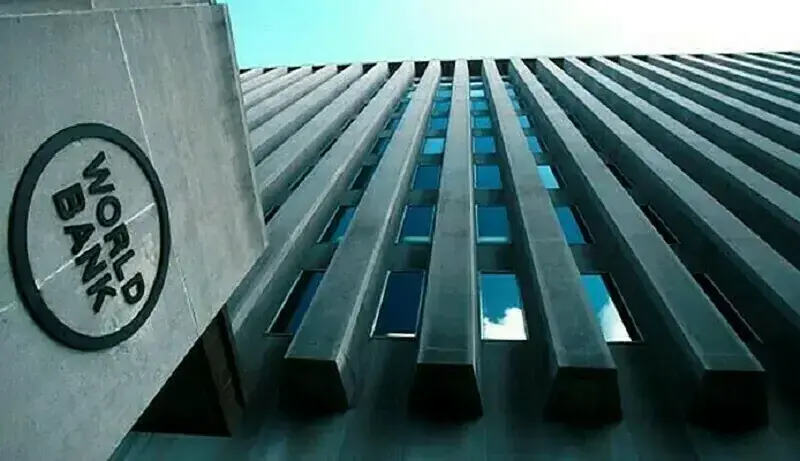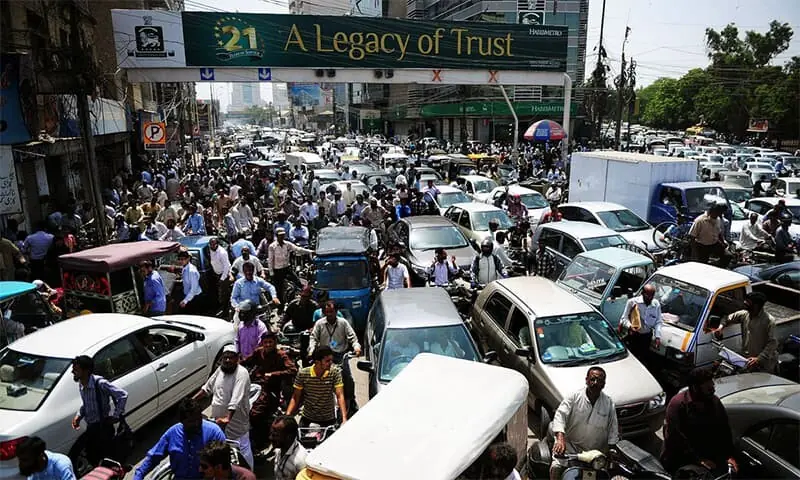Pakistan’s economy expanded three percent in fiscal year 2025 (FY25), the World Bank said in a report on Tuesday, but warned that growth is likely to remain flat in the next fiscal year due to the impacts of recent floods.
Earlier this month, the WB had lowered its growth forecast for Pakistan by half a percent to 2.6 percent for the current fiscal year due to the recent floods, which are also expected to push inflation to 7.2 percent.
The World Bank, in its previous economic outlook, had said: “For fiscal year 2025/26, real GDP growth is forecast to remain around 2.6%, as ongoing catastrophic floods have affected the forecast.”
The bank had earlier projected a 3.1 per cent growth rate for the country in its previous two-year outlook in April 2025. Pakistan has set a growth target of 4.2 per cent and has since been eyeing 3.5 per cent as part of its commitments to the IMF.
In the report released today, titled Staying the Course for Growth and Jobs, the World Bank predicted that “the economy’s growth is projected to remain at three percent for the fiscal year ending June 2026, due to the impacts of recent floods on the agricultural sector, before recovering in the medium term as current stability and continued reforms improve growth prospects.”
The World Bank said the country’s economy “expanded three percent in the fiscal year ending June 2025, up from 2.6 percent the previous year.”
“The immediate and persistent impacts of the recent floods are expected to impact growth, with real GDP growth projected to remain at three per cent in FY26,” it added.
Citing the reasons behind the expansion, the WB stated that “fiscal adjustment and appropriate monetary policy helped anchor inflation and support primary fiscal and current account surpluses amid a challenging global and domestic environment.”
“Increased confidence supported industrial and service sector growth, even as agriculture growth underperformed, in part due to adverse weather and pests,” he added.
However, it warned that while the outlook remains favourable, it has also “been tempered by recent flooding, which has had a significant impact on people and damage to urban areas and agricultural land”.
“The recent floods in Pakistan have imposed significant human costs and economic losses, damaging growth prospects and adding pressure on macroeconomic stability,” World Bank Country Director for Pakistan Bolormaa Amgaabazar said in the statement.
Amgaabazar continued: “Staying the course of reforms and accelerating job creation is critical to sustaining growth, as well as strengthening social safety nets and infrastructure that protect the most vulnerable citizens, and will help ensure sustainable development and economic resilience for all.”
For FY27, the World Bank projected 3.4% growth, “based on continued macroeconomic stability and commitment to key economic reforms.”
However, the lender warned that growth “will likely remain constrained amid tight fiscal policies aimed at rebuilding buffers amid continued global political uncertainty and vulnerability to natural disasters and climate shocks.”
According to the lead author of the WB report, Mukhtar Ul Hasan, “sustaining progress will require a balanced mix of revenue and expenditure measures to manage the impacts of the floods while maintaining progress towards fiscal consolidation.”
He described as “essential” the “urgent implementation” of priority fiscal reforms.
These reforms may include: expanding the tax base, strengthening tax administration and reducing the presence of the State in the economy through the divestment of state-owned companies and the rationalization of the public sector.
On exports, the statement, quoting a chapter from the report, said: “Pakistan’s exports have declined from 16 per cent of GDP in the 1990s to around 10 per cent in 2024, leaving growth dependent on debt and remittance-driven consumption, which are the basis of Pakistan’s recurring boom-bust cycles.”
“The chapter cites high tariffs, cumbersome regulations, and costly energy and logistics as key constraints, and notes that recent tariff reforms mark a historic step toward openness,” the statement reads.
He continued: “The chapter calls for broader measures, including a market-determined exchange rate, stronger trade finance, improved logistics and compliance, deeper trade agreements, and expanded digital and energy infrastructure to drive export-led growth, including exports of emerging IT services.”
Report co-author Anna Twum said: “The government has placed export growth at the center of its development agenda and has made significant progress in addressing political and structural barriers, most recently through the adoption of the National Tariff Policy, which will help reduce the costs of critical imported inputs.”
“However, tariff reforms alone will not be enough and must be complemented by broader measures to ensure a market-determined exchange rate, strengthen trade finance, improve trade facilitation and expand access to export markets,” Twum added.
On October 1, the Asian Development Bank (ADB) also maintained Pakistan’s growth forecast for the current year at three percent, while revising its inflation forecast upwards to six percent, citing the impact of recent floods on agriculture and infrastructure.
On Monday, the government claimed a rare federal fiscal surplus of Rs 1.5 trillion (instead of the usual deficits) in the first quarter of the current fiscal year.
Flood losses
In September, massive flooding across the country hit both rural heartlands and industrial centers for the first time in decades, causing billions of dollars in damage and straining food supplies, exports and a fragile economic recovery.
Record monsoon rains since late June, amplified by dam releases in India, have submerged large swathes of Punjab and Sindh in the past month.
Officials and analysts warn that the impact could be deeper than the 2022 floods, when a third of the country was underwater, due to a double impact on agriculture and manufacturing.
On the plains, satellite images have mapped the scale. A report by agricultural monitoring initiative GEOGLAM estimates that at least 220,000 hectares of rice fields were flooded between August 1 and September 16.
In Punjab, 1.8 million acres of agricultural land were flooded, according to the Provincial Disaster Management Authority (PDMA).
“About 50 percent of rice crops and 60 percent of cotton and maize crops have been damaged,” said Khalid Bath, president of the Pakistan Farmers Association.







